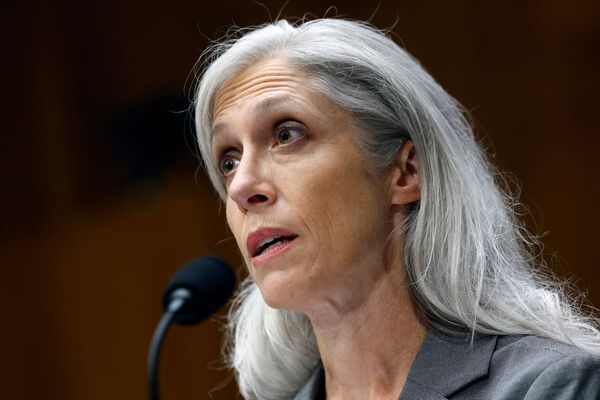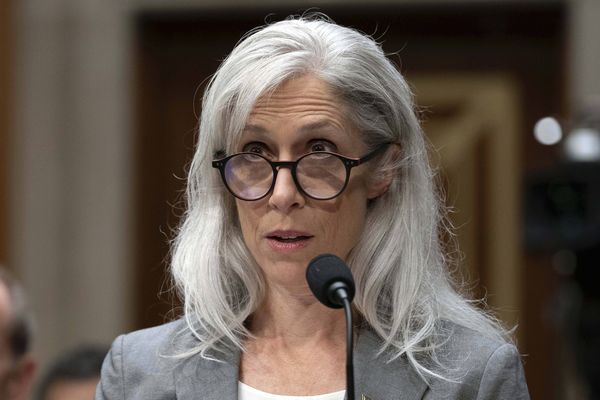Who doesn't want to make a lot of money in the market without taking outsize risks? Doing that, though, is easier said than done, says a top fund manager.
Do-it-yourself investors can learn a lot about building a diversified portfolio of stocks and bonds that generates stock-market-like returns with less risk from David Giroux, manager of T. Rowe Price Capital Appreciation (PRWCX).
Giroux's impressive track record lends extra weight to his market strategy. His blended fund's mix of mainly stocks and bonds has beaten its Morningstar peer group's average return for 16 straight years. Giroux's feat, according to T. Rowe Price, ties the record for U.S. equity or multi-asset funds managed by the same portfolio manager.
The long-term performance of T. Rowe Price Capital Appreciation vs. its peers ranks in the top percentile for the past five-, 10- and 15-year periods, according to fund-tracker Morningstar.
And the fund's equity component has outperformed the S&P 500 by more than four percentage points per year, on average, since Giroux took over the fund on June 30, 2006, through the end of 2023, according to T. Rowe Price data. The fund's equity "sleeve," or the part of the portfolio invested in stocks, has returned 14.17% annualized vs. 10.03% for the S&P 500.
Top Fund Manager's Secret
So, how does Giroux do it? What's his secret sauce? IBD caught up with the star manager recently to pick his brain about his winning investment strategies.
"We're a low-risk strategy," said Giroux. But that doesn't mean Giroux, who looks to exploit market inefficiencies, doesn't set out to beat the market each year. He does.
One of his main objectives is to generate a higher return than the S&P 500 on a risk-adjusted basis. Another goal is to make sure the fund doesn't lose any money over a three-year period no matter how bad the market is doing. Finally, with the help of higher-yielding fixed-income securities, mainly high-quality leveraged loans and high-yield bonds, he's looking to generate equity-market-like returns for the fund over a full market cycle while taking less risk.
Investors looking to build a low-volatility portfolio should take heed. When it comes to volatility, Giroux's fund has a beta of 0.69. Normal market risk is the S&P 500's beta of one. In short, Giroux is only taking roughly two-thirds of the market risk but not giving up much in returns. "Taking a third less risk than the market while earning close to S&P 500 returns is a really attractive proposition," said Giroux.
Why Top Fund Manager Says Asset Allocation Is Key
Giroux frowns on the idea of creating an asset mix solely to maximize returns without taking risk into consideration.
"We build a portfolio thinking about risk-adjusted returns first," Giroux said.
And not all balanced portfolios are the same. Especially when it comes to bond holdings. Giroux says the best risk-reward characteristics in the fixed-income space are in high-quality leveraged loans and high-yielding bonds. Treasuries are another option if they offer the right risk-reward.
Don't just look at the bond side of a portfolio as a way to preserve principal, says Giroux. Fixed income can also be a good way to add stock-like returns to an overall portfolio while also trimming risk.
"Over time, you're basically getting 75% of an equity-market return (with investments in high-rated leveraged loans and high-yielding bonds), but you're only taking about 15% of the market risk," said Giroux. "What those two asset classes do is really improve the risk-return of the overall fund strategy."
You don't have to buy only bonds with AAA ratings or those considered investment grade to sleep well at night. "We own a lot of high quality, call it BB bonds," he said. BB bonds, while not investment grade, earn the highest ratings of so-called junk bonds.
Why Buying Good Companies Under Market Stress Is Key
When it comes to stock picking, Giroux possesses a value streak. He likes to buy shares of good companies with strong growth prospects when they're on sale.
He's managing investors' long-term portfolios, the type of money IBD suggests putting in a high-quality fund and letting it grow over time.
Buying growth stocks when they're temporarily out of favor and selling at lower prices and valuations can lower downside risk as well as boost returns, Giroux says.
Look forward, not backward, when investing, he says. Look out five years, not five days, five weeks or five months when buying a stock. And make sure you plug in "very realistic" assumptions, such as earnings growth or sales.
"There's no easier way to make money than to buy companies where you have a really positive five-year outlook," Giroux said.
Find Growth At A Good Price
Snapping up growth stocks at a reasonable price, an investment strategy better known as GARP, is a good way to own great companies with lower risk, Giroux argues.
The top fund manager likes to put money to work when everyone else is fleeing the market. Or when a stock is going through a short-term funk or some sort of controversy that knocks its price down significantly.
"When there's blood in the street, we're typically adding to risk assets (like stocks)," said Giroux.
Last year, for example, when many CEOs were warning of recession and everyone on Wall Street was really negative on stocks, Giroux upped his equity allocation a lot. He loaded up on beaten-down semiconductor stocks, including market leader Nvidia.
"We went all in on Nvidia and all those companies because they were already priced for recession," he said. Similarly, in the spring of 2020 when Covid-19 was ravaging the stock market, Giroux was buying, not selling. "We deployed $9 billion into equities," he said.
Investors must be willing to take a contrarian approach to investing and do the opposite of what the investing herd is doing. "You have to be willing to bet against the grain to make money in the market," Giroux said.
What A Top Fund Manager Says You Should Look For In A Stock
Giroux says companies with the best upside potential have a few key traits. They tend to deploy capital in a way that makes the company better and improves its future outlook.
Giroux says key questions to ask are: "Are they making acquisitions that are additive (to earnings)? Are they adding to free-cash-flow growth? Are they reducing cyclicality? Or improving the core business?"
The top fund manager also likes companies that can grow both their earnings and dividends combined in high single digits or low double digits (in percentage terms). And from a valuation standpoint, he leans toward GARP stocks selling at attractive multiples going through a short-term rough patch.
Why Losing Less Than The Market In Bear Markets Is Key
A big part of performing well with less volatility is building a portfolio that declines less than the broad market in a down market and then captures a large chunk of the ensuing recovery, says Giroux.
To provide protection in down markets, Giroux's strategy is to own a combination of GARP stocks and higher-yielding fixed-income assets, such as high-yield bonds and leveraged loans.
"Most investors don't like to lose a lot of money in a down market," said Giroux. "They don't want to be down 35% or 37%. If the market is down 30% and (they are) down 22%, that's really valuable."







